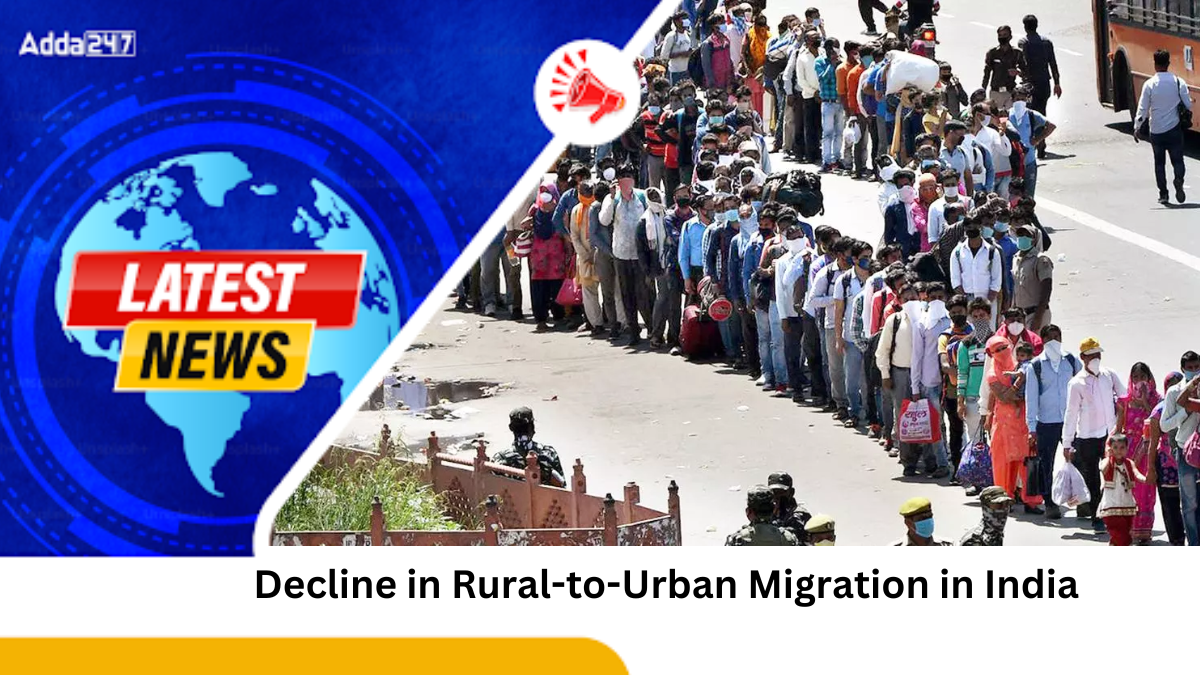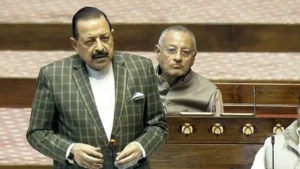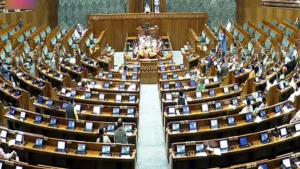Recent reports indicate a significant decline in rural-to-urban migration in India, leading to increased ruralization and associated economic challenges.
Reversal of Urbanization Trends
According to the Economic Advisory Council to the Prime Minister (EAC-PM), domestic migration decreased by 53.7 million in 2023, an 11.8% drop from 2011 levels. The overall migration rate fell from 37.6% in 2011 to 28.9% in 2023, with economic migration declining by 5 million, from 45 million in 2011 to 40 million in 2023.
Increased Dependence on Agriculture
The workforce’s reliance on agriculture has grown, with 46.1% engaged in the sector in 2023-24, up from 42.5% in 2017-18. This shift has led to higher food demand, narrowing urban supplies, and persistent food inflation. Additionally, there is a rise in disguised unemployment and stagnation in rural wages, particularly among women, whose real wages declined by 2.3% annually over the past five years.
Challenges to Infrastructure Development
Contrary to claims that improved rural infrastructure has reduced migration, the pace of rural electrification and housing construction has slowed in recent years. Between FY14 and FY24, 25 million rural houses were added, falling short of the potential 46.3 million if earlier growth trends had continued.
Implications for Economic Growth
The decline in migration and urbanization reduces the potential for productivity gains and economic growth traditionally driven by urban agglomerations. This trend also raises concerns about fiscal trade-offs, with the government potentially increasing revenue spending, cutting capital expenditures, or expanding GST coverage to compensate for slower tax revenue generation.
Policy Recommendations
Addressing these challenges requires a dual focus on rural and urban policies. Supporting rural incomes through fiscal incentives and employment programs is essential. Simultaneously, accelerating urban growth and creating economic opportunities in cities are critical to reversing the current trend.
Summary of the news
| Key Points | Details |
|---|---|
| Why in News | Decline in rural-to-urban migration in India, with the migration rate falling from 37.6% (2011) to 28.9% (2023). |
| Domestic Migration Decline | Total domestic migration dropped by 53.7 million in 2023, an 11.8% reduction compared to 2011. |
| Economic Migration Decline | Economic migration decreased from 45 million (2011) to 40 million (2023). |
| Rural Workforce Dependence | 46.1% of the workforce engaged in agriculture in 2023-24, up from 42.5% in 2017-18. |
| Rural Infrastructure Growth | Between FY14 and FY24, only 25 million rural houses were added, falling short of the 46.3 million potential. |
| Impact on Food Inflation | Increased reliance on agriculture contributed to higher food demand and persistent food inflation. |
| Stagnation in Rural Wages | Rural wages, particularly for women, declined by 2.3% annually over the last five years. |
| Urban Productivity Concern | Slower urbanization reduces productivity gains and economic growth potential. |
| Policy Recommendations | Focus on boosting rural incomes, accelerating urban growth, and balancing rural-urban development. |



 Parliament Passes SHANTI Bill, AERB Gets...
Parliament Passes SHANTI Bill, AERB Gets...
 Viksit Bharat G RAM G Bill Passed in Lo...
Viksit Bharat G RAM G Bill Passed in Lo...
 Bharat Taxi to Roll Out in January 2026 ...
Bharat Taxi to Roll Out in January 2026 ...







